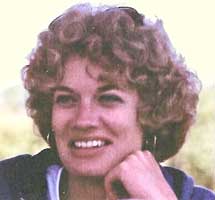Violet Jiménez Sims, recipient from 2008, writes about her experience at New Britain High School, where she teaches Spanish. Ms. Jimenez Sims earned bachelor’s and master’s degrees from the University of Connecticut and is a graduate of Connecticut’s Alternate Route to Certification. Posted January 20, 2012.
As I walk down the hall of an urban high school, I hear the N-word being thrown around more frequently than “please,” “thank you,” or even “hello.” Somehow I don’t cease to be amazed when even a white kid walks down the hall, passes one of the “cool” kids, and immediately tries to connect by exclaiming, “What up, my nigga!” I cringe at the sound of this foolishness. The African American students are not offended by this; after all, they are the first ones to run around using it as a show of affection.
This mental slavery that so many of our young people subject themselves to is an absolute disgrace to all the civil rights leaders who fought to eliminate injustice and the open degradation of people of color. The shackles are not physical, but yet their subliminal control is more powerful than a wrought iron ball and chain.
Supposedly, the N-word has changed in meaning. Many claim it is still used with both negative and so-called “positive” intention. The spelling change that is often claimed as significant is simply an ignorant cop-out. Have you even been in an urban environment? Urban vernacular commonly drops “er” endings without words losing their meaning: “motha” “fatha” “sista” “brotha.”
The word “nigger” was used by the “massa” to label slaves with an artificial ignorance that would justify why they traded them like cattle, and physically abused them in a way that would have PETA in an uproar if the same were done to a dog. It defines a lazy person with no self respect, no regard for family, ignorant, stupid, slow moving, who does not speak proper English. Even after so-called “freedom” and emancipation, the KKK used the term to identify those who would be hanged, castrated, or even burned alive.
Sadly, while most Americans can trace their lineage back for centuries and to their countries of origin, it is difficult for many African Americans to trace their lineage past a few generations. Family histories were lost due to the slave trade’s purposeful separation of parents from their children and siblings from each other. As a result, African Americans developed a more inclusive term, one that connects those who shared an unimaginable struggle, and was often heard in the uplifting discourse of civil rights leaders, “brother.”
So, why use what the oppressor developed rather than that of the people who sacrificed in unthinkable ways allowing us to have the opportunities and enjoy the freedoms we have today?
And if you think that history doesn’t apply to you because you’re Puerto Rican or Dominican, you are mistaken. Learn your history, because the slave trade on our precious islands began even before it did on the U.S. mainland, and its effects are still apparent today.
The change would be small, but its effects on camaraderie would be immense. Conveniently, brother and sister also happen to end in an “er” that is often replaced by an “a” in urban vernacular. So, all your favorite raps would still rhyme while you boost your morale by referring to each other with words that foster unity rather than ignorance. The invisible shackles must be broken and replaced by visible embraces. Instead of tripping each other we could actually hold each other up.
The N-word alone is not the problem. Inflated poverty rates, disproportionally low graduation rates, and unemployment rates are bigger problems.
But the frequent use and acceptance of the N-word by our own people is a daily reminder that, although we have overcome many things, many of us have lost sight of how far we have to go.
Saying this word and allowing others to say it is a sign that we have given up, or mistakenly believe the fight for equality is over.
